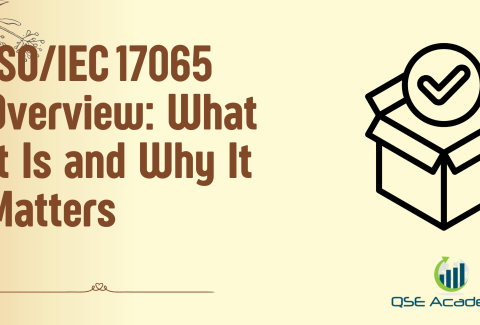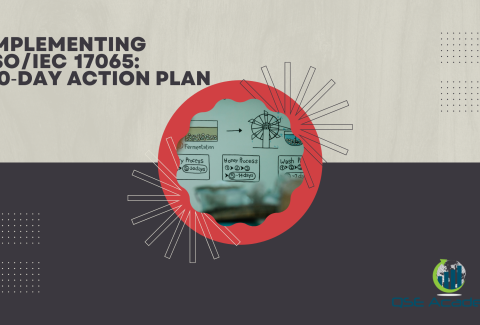Top ISO/IEC 17065 Audit Non‑Conformities
Why ISO/IEC 17065 Audit Non-Conformities Keep Appearing (and How to Avoid Them)
Over the years working with certification bodies on ISO/IEC 17065 implementation and accreditation assessments, I’ve noticed one pattern that never changes: the same non-conformities appear again and again. Different product categories, different accreditation bodies, different teams — but the findings are almost identical.
That’s why understanding these non-conformities is so important. They’re predictable. And because they’re predictable, you can address them long before the assessor shows up.
In this breakdown, I’ll walk you through the top issues I see across impartiality, competence, documentation, scheme design, and evaluation processes. I’ll share what causes them, how assessors spot them instantly, and practical strategies to fix them — not just on paper, but in real operations.
Impartiality Non-Conformities in ISO/IEC 17065 (Clause 4 Risks & Weak Controls)
If there’s one area ISO/IEC 17065 assessors treat with zero tolerance, it’s impartiality. And honestly, they’re right to do so — impartiality is the backbone of product certification.
The most common findings look like this:
- Impartiality committee doesn’t meet regularly
- Risk assessments exist but aren’t updated
- Mitigation actions are superficial
- Conflict-of-interest declarations are missing
- No evidence of independent oversight
Here’s what I’ve noticed: many CBs see impartiality as an annual admin exercise. But assessors expect it to be monitored continuously, especially when dealing with products that carry safety, regulatory, or public-risk implications.
Pro Tip: Keep an active impartiality risk register. Update it whenever new schemes, new staff, or new partnerships are introduced.
Common mistake: Documenting risks but never demonstrating how they were mitigated.
I once supported a CB that received a major finding simply because the impartiality committee hadn’t met for 18 months. The risk assessment was on file, but there was no evidence of actual oversight. The content wasn’t the problem — the lack of action was.
 Structural Non-Conformities (Clause 5 – Weak Decision-Making Separation)
Structural Non-Conformities (Clause 5 – Weak Decision-Making Separation)
Structural requirements are clear: evaluation and decision-making must be separate. Yet this is one of the most frequent non-conformities I encounter.
Typical findings include:
- Unclear organizational structure
- Responsibilities spread across poorly defined roles
- Decision-makers involved in evaluation or testing
- Committees set up but not functioning
This is important because ISO/IEC 17065 requires independence to avoid bias. Assessors will interview staff and instantly see when roles overlap.
Pro Tip: Create a responsibility matrix that clearly maps evaluation, review, and decision-making activities. You want zero overlap.
Common mistake: Letting senior evaluators influence certification decisions. It looks efficient internally — but it’s non-conforming externally.
True story — one CB had a highly knowledgeable evaluator who also approved certification decisions “because he understood the product better.” Assessors flagged it immediately. It resulted in two major non-conformities and a long corrective-action cycle.
Resource & Competence Non-Conformities (Clause 6 – Insufficient Competency Evidence)
Competence is one of the most sensitive areas in ISO/IEC 17065. Assessors don’t care only about training — they care about competence demonstrated in practice.
The most common non-conformities include:
- Missing competency criteria per role
- Training records without outcomes
- No evaluation of technical experts
- Stale or outdated staff qualifications
- No traceability to scheme-specific requirements
In my experience, accreditation bodies want to see real evidence — not assumptions.
Pro Tip: Build a competency matrix that links each employee to scheme-specific technical requirements.
Common mistake: Relying on CVs as evidence. A CV is not a competency record.
I saw an assessor reject a personnel file because the training certificate had no description of learning outcomes or assessment results. That single missing detail triggered a “competence not demonstrated” finding.
Process Non-Conformities (Clause 7 – Evaluation, Testing & Decision Errors)
Clause 7 is where assessors find the “guts” of your certification system. Non-conformities here are serious because they show operational weaknesses — not just paperwork gaps.
Common findings include:
- Inconsistent evaluation steps
- Missing traceability to testing results
- Incorrect sampling plans
- Evaluation performed according to outdated scheme rules
- Poorly documented certification decisions
This is important because scheme rules must match actual certification activities.
Pro Tip: Cross-check every evaluation step against your scheme. If your scheme says sampling plan A is required, make sure evaluators aren’t using an older version.
Common mistake: Updating scheme documents but not updating evaluator instructions.
I once investigated a major finding where the scheme defined one sampling route, but evaluators used a previous version stored on their local computers. The decision was technically correct — but the process was non-conforming.
Management System Non-Conformities (Clause 8 – Internal Audit & Corrective Action Weaknesses)
Clause 8 findings usually reveal whether your system is mature or superficial.
Typical findings:
- Internal audits not deep enough
- Audit questions too generic
- No verification of corrective actions
- Complaints not tracked properly
- Management review missing key performance indicators
Here’s what I’ve noticed: many CBs treat internal audits as box-ticking exercises. Assessors expect internal audits to test effectiveness, not just compliance.
Pro Tip: Re-audit high-risk areas before the accreditation assessment. It shows maturity and avoids repeat findings.
Common mistake: Closing findings without verifying effectiveness. That’s the fastest way to receive repeat non-conformities.
I worked with one CB that had the same issue flagged three years in a row because they “closed” the finding administratively without checking effectiveness. The assessor finally issued a major NC because it was systemic.
Documentation & Record Non-Conformities (Version Control, Evidence Traceability, Missing Records)
Documentation errors are often avoidable, yet they represent a huge portion of non-conformities.
Common issues:
- Multiple versions of the same document
- No master list of controlled documents
- Evidence missing during sampling
- Traceability gaps between testing, evaluation, and decisions
- Records stored in different systems with inconsistent timestamps
Pro Tip: Maintain a single document-control system with version history and clear ownership.
Common mistake: Mixing printed and digital versions. Assessors will spot discrepancies immediately.
One CB was using three versions of the same scheme — one printed, one on a network drive, and one on a laptop. The assessor didn’t even need an hour to raise a major finding.
Scheme-Specific Non-Conformities (Weak Scheme Design & Misalignment With ISO/IEC 17067)
Scheme design is often underestimated. But ISO/IEC 17065 requires schemes to be clear, coherent, and aligned with real evaluation practices.
Typical scheme-related findings include:
- Undefined decision criteria
- Missing sampling strategies
- Poor surveillance planning
- No link to evaluation/testing activities
- Scheme rules not aligned with regulatory requirements
Pro Tip: Conduct an annual “scheme health check.” Make sure scheme rules match actual certification activities.
Common mistake: Copying generic scheme templates from ISO/IEC 17067 without adapting them to your product categories.
I recall a CB whose scheme lacked regulatory alignment for a specific category of imported goods. The accreditation body removed that product category from their scope until the scheme was completely rewritten.
FAQs – ISO/IEC 17065 Audit Non-Conformities
What’s the most common non-conformity in ISO/IEC 17065 audits?
Impartiality issues — especially lack of evidence that risks are monitored and mitigated.
Can major non-conformities be fixed without losing accreditation?
Yes, but corrective actions must be thorough, evidence-based, and verified for effectiveness.
How do I avoid repeat findings?
Focus on root-cause analysis. Not symptoms. Fix the system, not just the documents.
Conclusion: Stop ISO/IEC 17065 Audit Findings Before They Happen
Once you understand the patterns behind the most common ISO/IEC 17065 non-conformities, preventing them becomes much easier. Each of these areas — impartiality, competence, scheme alignment, documentation, and internal audits — reflects how mature and controlled your certification system really is.
I’ve helped many certification bodies turn major findings into strengths simply by addressing these core issues early. If you want smoother assessments and stronger compliance, start with these high-risk areas and build your readiness from the inside out.
Melissa Lavaro is a seasoned ISO consultant and an enthusiastic advocate for quality management standards. With a rich experience in conducting audits and providing consultancy services, Melissa specializes in helping organizations implement and adapt to ISO standards. Her passion for quality management is evident in her hands-on approach and deep understanding of the regulatory frameworks. Melissa’s expertise and energetic commitment make her a sought-after consultant, dedicated to elevating organizational compliance and performance through practical, insightful guidance.









